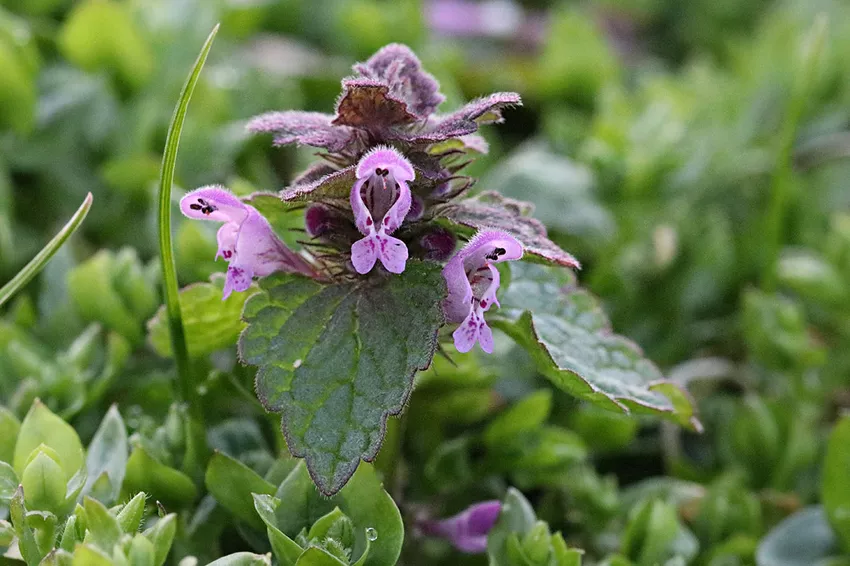
Known as Lamium purpureum in botanical jargon, purple deadnettle is an interesting, fast-growing plant. The following profile shows what makes it different and how it can be used.
In a nutshell
- up to four generations per year possible
- serves as bee food
- annual
- edible
- early flowering period
Look
The purple deadnettle is visually reminiscent of stinging nettles. However, the leaves are not covered with stinging hairs, so they can be touched without any problems or danger. The leaf color varies between a rich green and a dark violet. The purple leaves are mainly found at the tips of the shoots. Therefore, at first glance, they are sometimes difficult to distinguish from the similarly colored flowers.
heyday
There is something special about the flowering, because it takes place between March and October and can occur up to four times a year. As a result, they serve as food for bees, bumblebees and other useful insects very early in the year. Although the deadnettle is often considered a weed, it is both decorative and a useful addition to the garden, especially because of the flowers.

Notice: Flowering is even possible in winter. This applies above all to warm regions and mild climates.
height
Here the purple deadnettle is very variable. The height ranges from five to 40 centimeters. With regard to growth, the following points also apply:
- narrow
- fast growing
- often occurs in groups
location
Deadnettles are so-called indicator plants. If they spread, this points to various criteria. This includes:
- fresh substrate
- half light
- moderate heat
- nitrogen-rich sites
Tip: Since the stinging nettle has similar requirements, both plants can grow in the same location. However, the distinction is possible.
substrate
Crimson Deadnettle prefers soil that meets the following criteria:
- permeable
- slightly damp
- nutritious

They are therefore mainly found in large numbers near compost heaps, in fertilized areas and around bodies of water. Gardens, parks and forest edges can also be used.
Propagation & Spread
With up to four flowering times a year and a comparatively long flowering period, plenty of seeds are formed. In addition, the purple deadnettle is designed so that cross-pollination is very easy.
After the seed bodies have formed, they self-seed when they open. If you want to prevent this, or at least limit it, you can cut off dried flowers.
Annual
The purple deadnettle is an annual plant. This means that the adult plants die in autumn or in winter at the latest. However, the seeds are hardy, so that new shoots appear as early as February or March. Due to the fast germination and the rapid growth, the flowering starts very early.
As a result, the dead nettle is also wonderfully suited for culture in a bucket. Overwintering is not necessary and the balcony or terrace can be greened very early in the year.
frequently asked Questions
Is dead nettle edible or poisonous?The plants are edible for both humans and animals and are completely harmless. They also do not pose a danger in gardens where children and pets play. In fact, they are also used in natural medicine. So the supposed weed has more than one use.
How can the spread be reduced?Remove the plants before they can seed. However, keep in mind that the flowers are a valuable food source for many animals. As long as the plants don't disturb you, you can leave them there without hesitation.
How can dead nettles be distinguished from stinging nettles?Purple deadnettles are comparatively easy to tell apart, especially when they are in bloom. Because the flowers of the dead nettle are significantly larger and stand out in color from the leaves. This is not the case with nettles. In addition, stinging nettles usually grow taller and are consistently green.